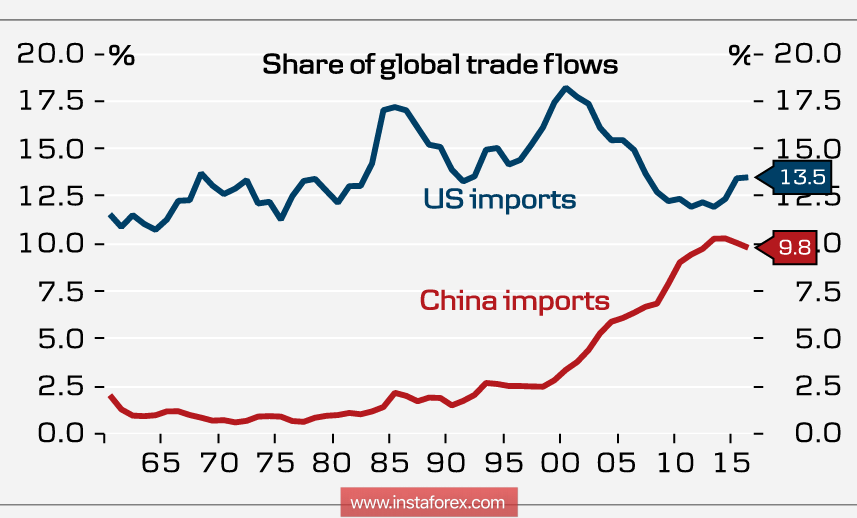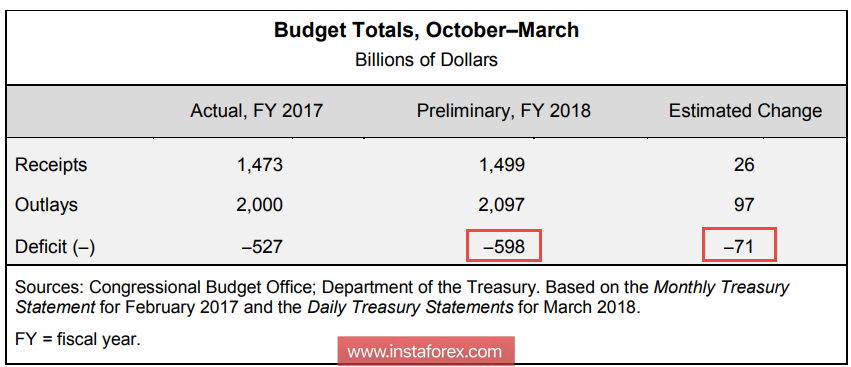Throughout the second half of the week, markets were in anticipation of the publication of data on employment in the US and the outcome of the escalation of the probability of trade wars between the US and major exporters, primarily with China.
The employment report was significantly worse than expected. The number of new jobs in the non-agricultural sector has increased by only 103 thousand. This is the lowest since October last year and is much less than the forecast. Unemployment remained at 4.1% while the decrease was expected to be at 4.0%. At the same time, the market responded relatively gently. As one of the key parameters, the growth rate of the average wage, increased from 2.6% to 2.7% year on year, which slightly increased the chances of inflation and somewhat mitigated the negative effect.
Meanwhile, concerns over the escalation of the trade war contributed to increased tension in the markets. US stock indices on Friday lost more than 2%. Industrial Dow Jones lost 3.08% in the course of trading. Players increased sales after it became clear that Donald Trump had ordered to study the possibility of increasing duties on goods from China by $100 billion.
Until recently, it seemed that there would not be a trade war. The US increased duties not by 60 billion, as announced, but by 50 billion, and the markets believed that China would limit itself to a symbolic response. However, after China quickly struck at Trump's electorate, limiting the supply of soy and other agricultural products, Trump decided to "pinch" the intractable partner and expand the list.

The Ministry of Commerce in China held a special briefing on Friday wherein the Minister of Trade made it clear that China considers the US policy to be mistaken and as such, will resist it.
The issue is so serious that Finance Minister Mnuchin also spoke about the issue. According to him, the US will cope with this challenge. In general, the US financial authorities are quite complacent, as China has limited opportunities for a symmetrical response and the increase in tariffs can also contribute to inflation in the US, which is precisely the goal.
Federal Reserve Chairman Powell, commenting on the state of the American economy and rate growth rates this year, preferred streamlined wording. According to him, the regulator has not decided on the rate increase this year and that the decision will depend on many factors, primarily employment and inflation.
Moreover, Powell added that it is necessary to withstand a balance. A slow pace of increases in rates will restrain economic expansion while a too fast pace of increases will be a threat of slowing inflation below the target of 2%.
The inflation report for March will be published on Wednesday, April 11. While optimistic forecasts are anticipated, prices are expected to rise to 2.3% against 2.2% a month earlier. Excluding energy and food, the prices resulted from 1.8% to 2.0%. If the report, as a result comes out no worse than expectations, the dollar will respond to a noticeable increase as the chances of a fourth rate hike in the Fed rate this year will also increase.
On Wednesday, a report on the state of the budget in March will also be published. On the eve of the budget committee, the reports on the state of the budget for the first half of 2018 financial year was released and the result was disappointing. The deficit amounted to 598 billion dollars, revenues grew by 2%, and expenses - by 5%.

Attention is drawn to the weak growth of budget revenues. This is due to the weakening of the tax burden and, accordingly, to the reduction of tax charges. The Trump reform implied a failure in revenues at the initial stage but the actions now undertaken should, according to the plan, rectify the situation. Repatriation of capital will be possible if you raise the profitability of the dollar. So, you cannot reduce rates of growth rates, plus administrative measures in terms of trade policy. All this is considered and obvious actions. It is another matter whether it will be possible to execute this program without a noticeable depreciation of the dollar and the devaluation of the standard of living of the population, in which there are serious doubts.
The dollar will start the week under pressure. It is likely that there will be growth of defensive assets, primarily gold and the Japanese yen, and an increase in demand for government bonds, which will lead to a slight decrease in yields.
 English
English 
 Русский
Русский Bahasa Indonesia
Bahasa Indonesia Bahasa Malay
Bahasa Malay ไทย
ไทย Español
Español Deutsch
Deutsch Български
Български Français
Français Tiếng Việt
Tiếng Việt 中文
中文 বাংলা
বাংলা हिन्दी
हिन्दी Čeština
Čeština Українська
Українська Română
Română

